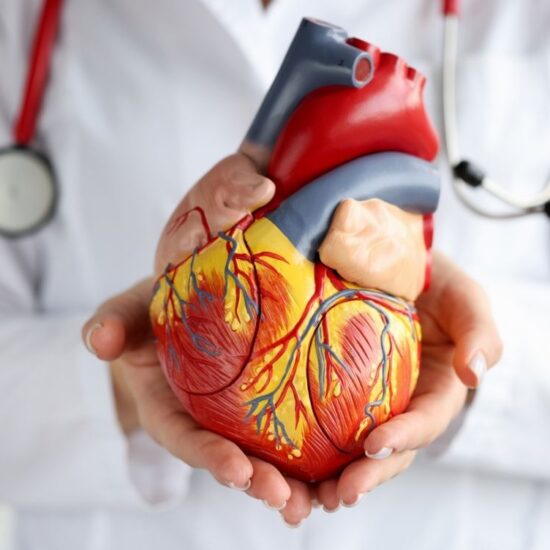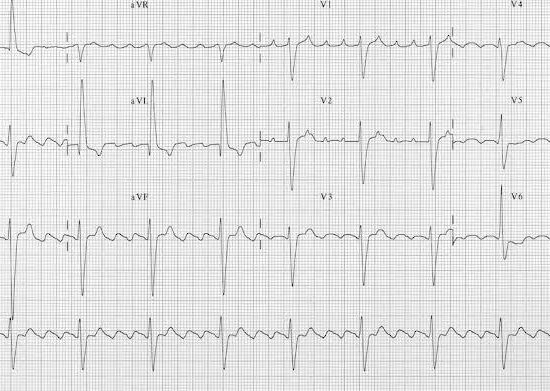What is Acute Coronary Syndrome? Symptoms and Treatment
Acute coronary syndrome is a term that describes a set of conditions involving sudden reduction of blood flow to the heart. These conditions include heart attack and unstable angina.
A heart attack occurs when cell death damages or destroys heart tissue. Heart attack is also known as myocardial infarction.
Unstable angina occurs when blood flow to the heart decreases. It is not severe enough to cause cell death or a heart attack. But decreased blood flow can increase your risk of heart attack.
Acute coronary syndrome often causes severe chest pain or discomfort. It is a medical emergency that requires immediate diagnosis and care. Goals of treatment include improving blood flow, treating complications, and preventing future problems.
symptoms
Symptoms of acute coronary syndrome usually begin suddenly. These include:
- Chest pain or discomfort. This is often described as pain, pressure, tightness or burning. Chest pain is also called angina.
- It is pain that starts in the chest and spreads to other parts of the body. These areas include the shoulders, arms, upper abdomen, back, neck or chin.
- Nausea or vomiting.
- Indigestion.
- Shortness of breath, also called dyspnea.
- Sudden, heavy sweating.
- Racing heartbeat.
- Dizziness or feeling of lightheadedness.
- Fainting.
- Unusual fatigue.
Chest pain or discomfort is the most common symptom. But symptoms may vary slightly depending on your age, gender, and other medical conditions. If you are a woman, an older adult, or have diabetes, symptoms are more likely to occur without chest pain or discomfort.
When should you see a doctor?
Acute coronary syndrome is a medical emergency. Chest pain or discomfort can be a symptom of many life-threatening conditions. Get emergency help right away for diagnosis and appropriate care. Do not take yourself to the hospital.
reasons
Acute coronary syndrome is usually caused by the buildup of fatty deposits on the walls of blood vessels that supply blood, oxygen and nutrients to the heart muscles. Fat deposits are also called plaque. The blood vessels that feed the heart are also called coronary arteries.
A blood clot occurs when a fatty deposit ruptures or splits. This clot blocks the flow of blood to the heart muscles.
When the oxygen supply to cells is too low, cells in the heart muscles can die. The death of cells damages muscle tissues. This is called a heart attack.
Even if there is no cell death, the decrease in oxygen causes the heart muscles to not work as they should. This change may be short-term or permanent. When acute coronary syndrome does not result in cell death, it is called unstable angina.
Risk factors
The risk factors for acute coronary syndrome are the same as for other types of heart disease. Risk factors include:
- Lean.
- Hypertension.
- High blood cholesterol.
- Smoking tobacco.
- Lack of physical activity.
- Eating an unhealthy diet.
- Obesity or overweight.
- Diabetes.
- Personal or family history of chest pain, heart attack, or stroke.
- High blood pressure during pregnancy, a history of preeclampsia or diabetes, and early menopause.
- Covid-19 infection.
Diagnosis
Acute coronary syndrome requires urgent medical care in a hospital. Tests are performed to check the heart and determine the cause. Some tests may be performed while your healthcare team asks you questions about your symptoms or medical history.
Tests for acute coronary syndrome may include:
- Electrocardiogram (EKG or EKG). This rapid test measures the electrical activity of the heart. Sensors called electrodes are attached to the chest and sometimes to the arms or legs. Changes in heartbeat may mean that the heart is not working properly. Certain patterns in electrical signals can indicate the general location of a blockage. The test may be repeated several times.
- Blood tests. Some heart proteins slowly leak into the blood after heart damage from a heart attack. Blood tests may be done to check for these proteins.
Your symptoms and test results can help your healthcare team diagnose acute coronary syndrome. This information can also help classify your condition as a heart attack or unstable angina.
Other tests may be done to learn more about your condition and rule out other causes of the symptoms. Tests can also help determine treatment.
- Coronary angiogram. This test helps healthcare providers see blockages in the heart arteries. A long, thin, flexible tube called a catheter is inserted into a blood vessel, usually in the groin or wrist. It is directed to the heart. The dye flows from the catheter into the arteries in the heart. A series of x-rays shows how the dye moves through the arteries. The catheter can also be used for treatment purposes.
- Echocardiogram. This test uses sound waves to create pictures of your beating heart. It shows how blood flows through the heart and heart valves. An echocardiogram can help determine whether the heart is pumping properly.
- Myocardial perfusion imaging. This test shows how well blood flows through the heart muscle. A small, safe amount of radioactive material is given by IV. A special camera takes pictures of the substance as it passes through the heart. The test helps find areas of poor blood flow or damage to the heart.
- Computed tomography (CT) angiogram. This test looks at the arteries that supply blood to the heart. It uses a powerful X-ray machine to create images of the heart and blood vessels.
- Stress test. A stress test shows how well your heart works when you exercise. It usually involves walking on a treadmill or riding a stationary bike while your heart is checked. If you cannot exercise, you may be given medication. This test is done only when you are at rest and have no symptoms of acute coronary syndrome or another life-threatening heart condition. Other tests may be done during the stress test to see how well the heart is working.
Treatment
The immediate goals of acute coronary syndrome treatment are:
- Ease pain and distress.
- Improve blood flow.
- Restore heart function as quickly and as much as possible.
Long-term treatment goals are to help the heart work better, manage risk factors, and reduce the risk of heart attack. Treatment may include medication and surgical procedures.
medicines
Depending on your diagnosis, medications may include:
- coagulants It helps break up a blood clot blocking an artery. These drugs are also called thrombolytics.
- Nitroglycerin It improves blood flow by temporarily widening blood vessels.
- Anti-platelet drugs It helps prevent blood clots from forming. These include aspirin, clopidogrel (Plavix), and prasugrel (Effient).
- Beta blockers It helps relax the heart muscle and slow the heart rate. They reduce the demand on your heart and lower blood pressure. Examples include metoprolol (Lopressor, Toprol-XL) and nadolol (Corgard).
- Angiotensin-converting enzyme (ACE) inhibitors dilate blood vessels and improve blood flow. This helps the heart work better. Examples include lisinopril (Zestril), benazepril (Lotensin), and others.
- Angiotensin receptor blockers (ARBs) It helps control blood pressure. These include irbesartan (Avapro), losartan (Cozaar), and others.
- Statins It reduces the amount of cholesterol in the blood. They stabilize fatty deposits, making them less likely to rupture and form blood clots. Statins include atorvastatin (Lipitor), simvastatin (Zocor, Flolipid), and others.
- Other cholesterol-lowering medications such as ezetimibe (Zetia).
Surgery and other procedures
Your healthcare provider may recommend one of these treatments to restore blood flow to the heart:
- Angioplasty and stenting. In this treatment, a thin, flexible tube and a tiny balloon are used to open blocked heart vessels. The surgeon inserts the tube into a blood vessel, usually in the groin or wrist, and guides it into the narrowed heart artery. A wire with a deflated balloon at the end passes through the tube. The artery is widened by inflating the balloon. The balloon is deflated and removed. A small mesh tube is usually inserted into the artery to help keep it open. The mesh tube is also called a stent.
- Coronary artery bypass surgery. This major surgery involves removing a healthy blood vessel from the chest or leg area. This piece of healthy tissue is called a graft. A surgeon connects the ends of the graft below the blocked heart artery. This creates a new pathway for blood to flow to the heart.






